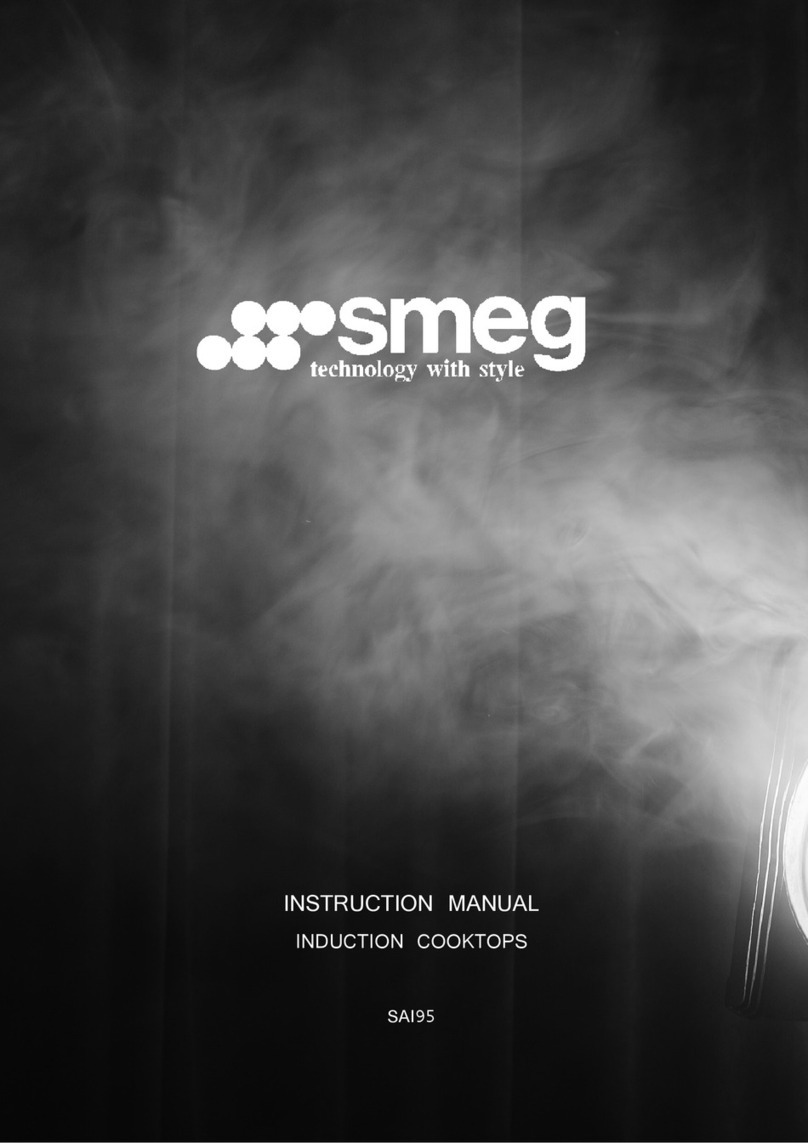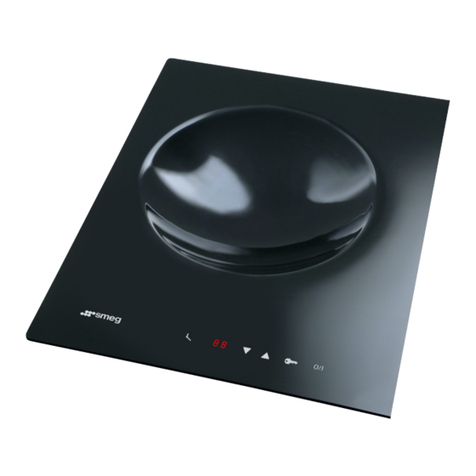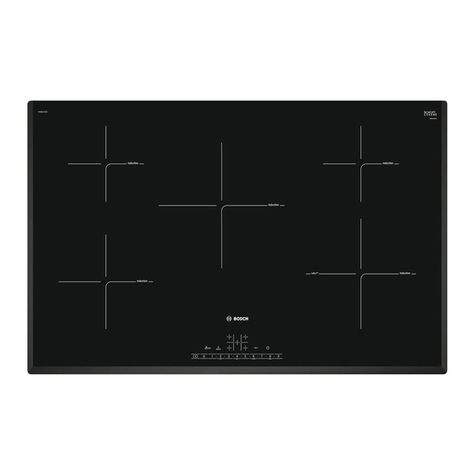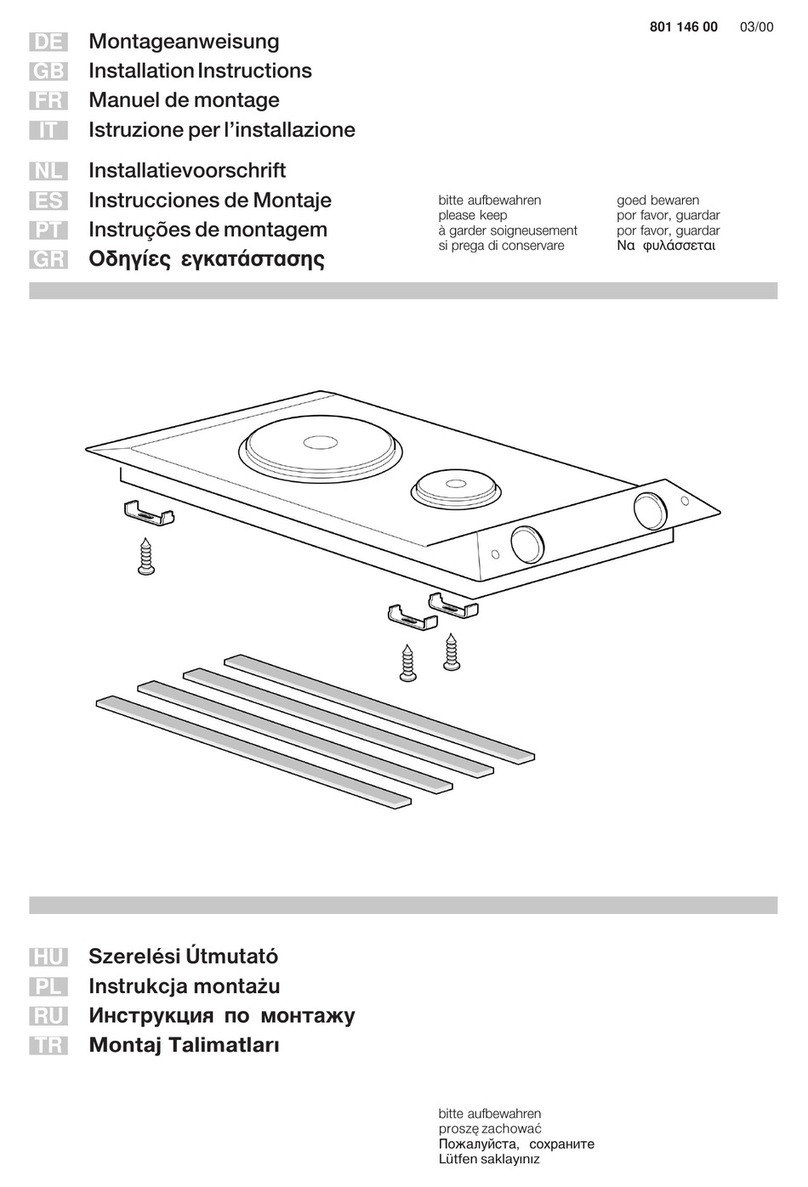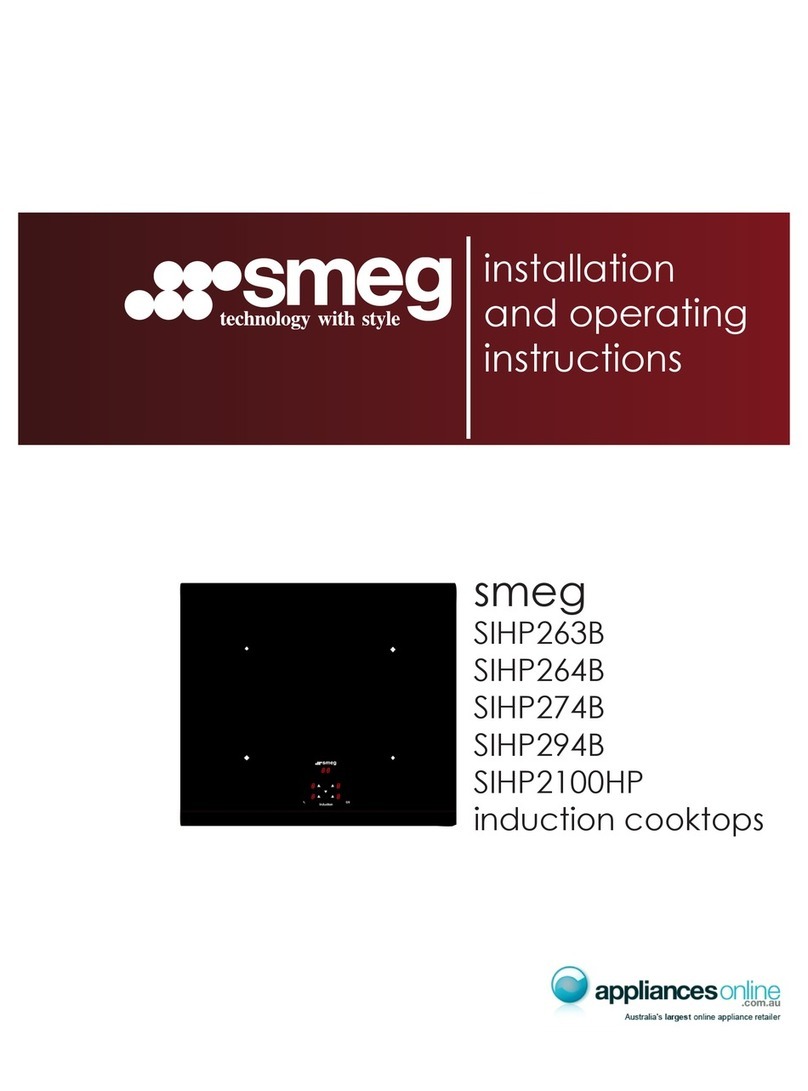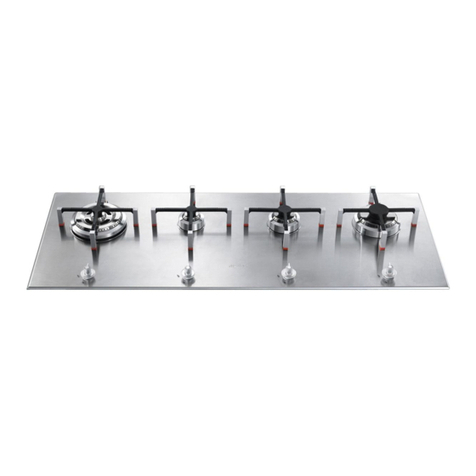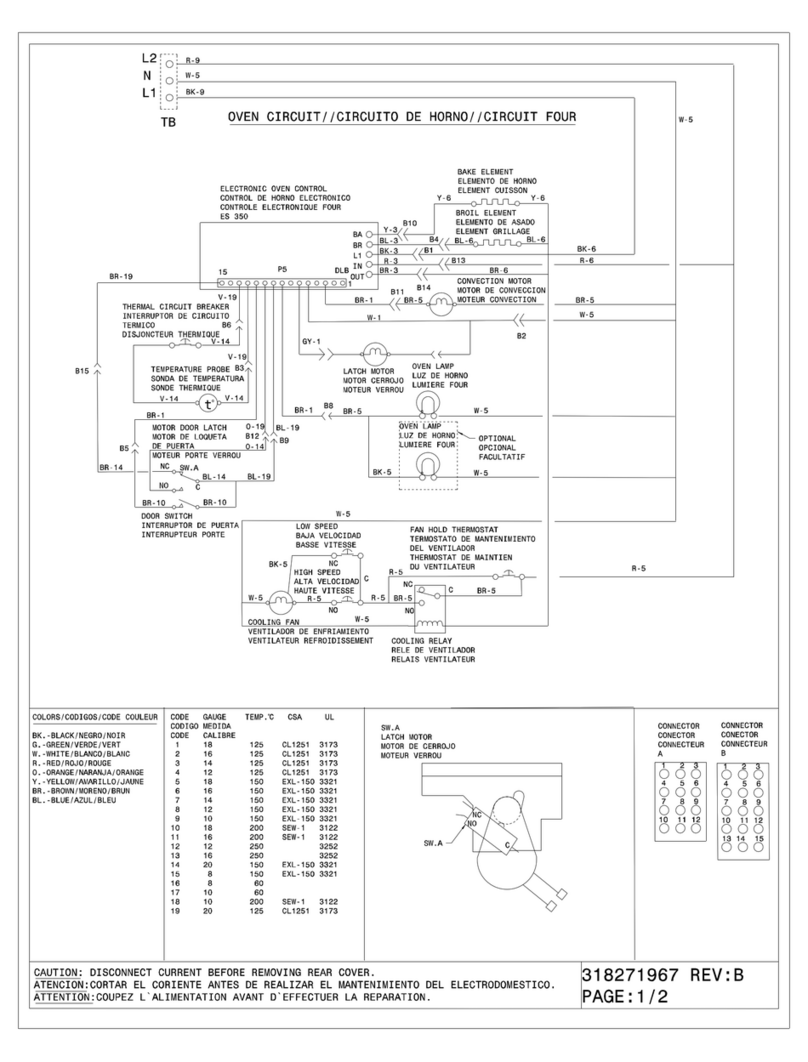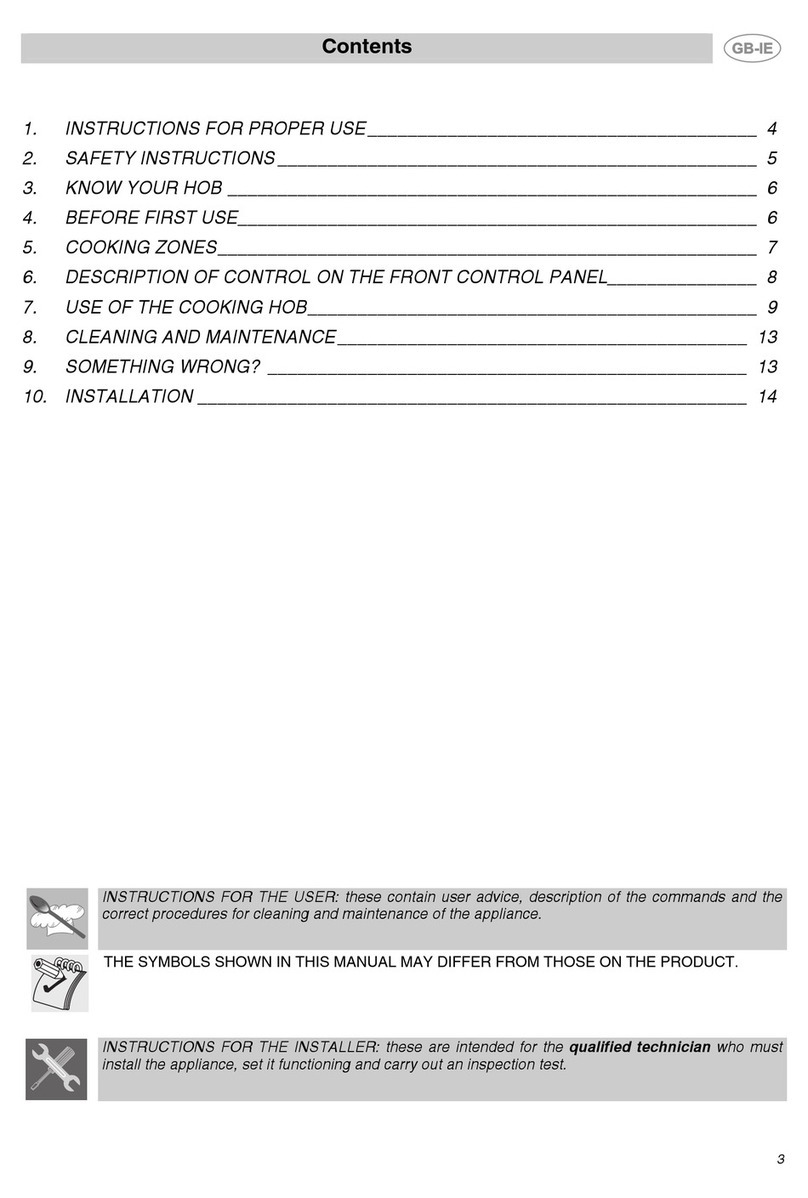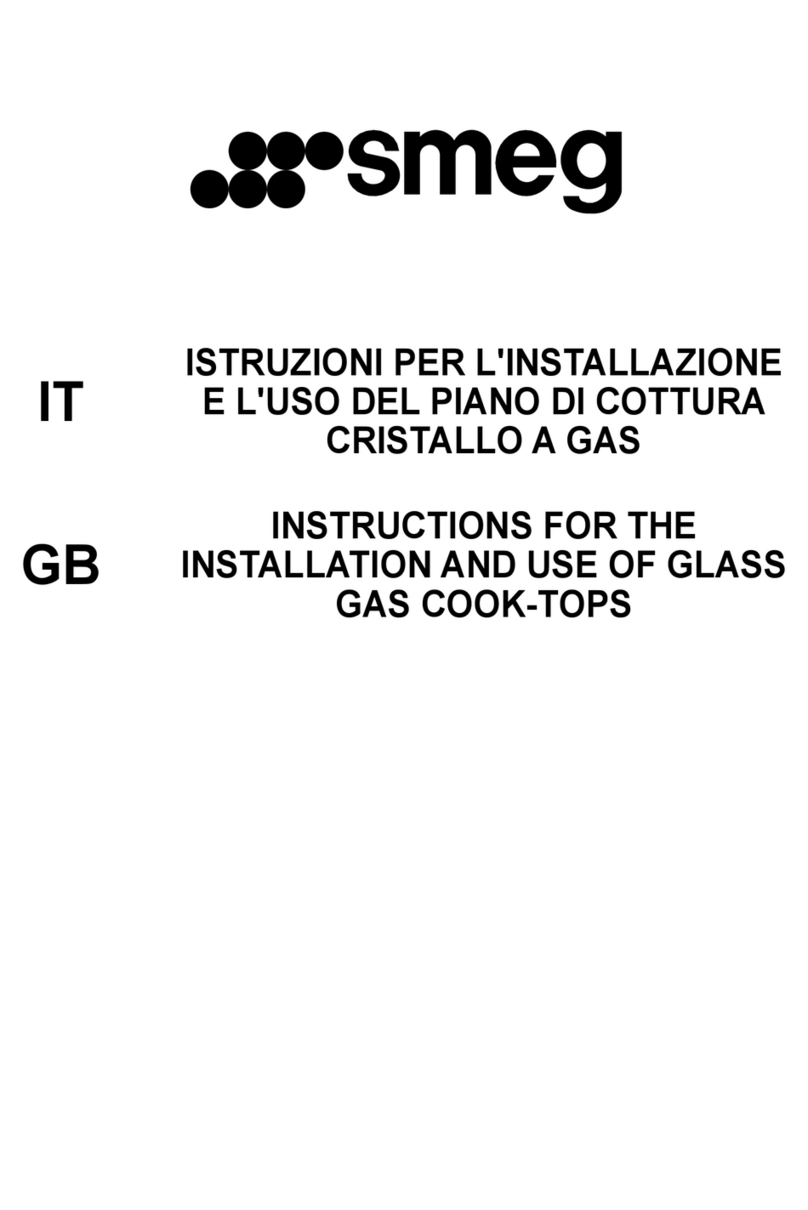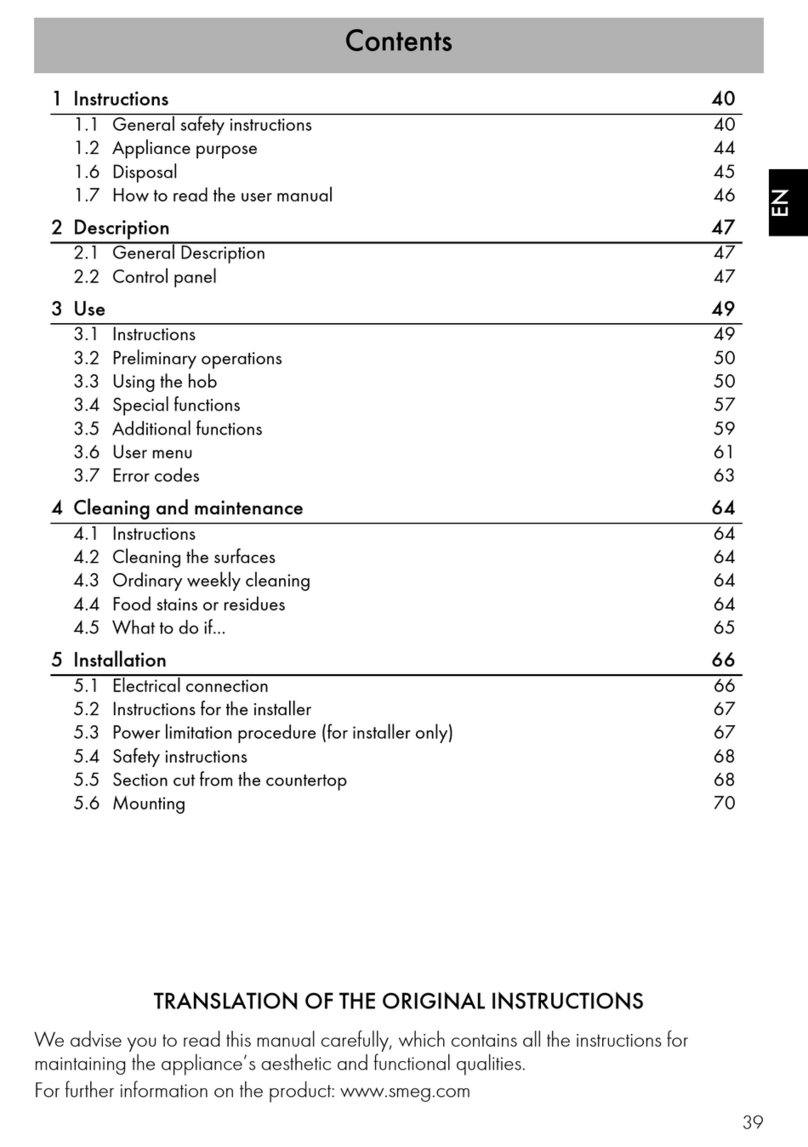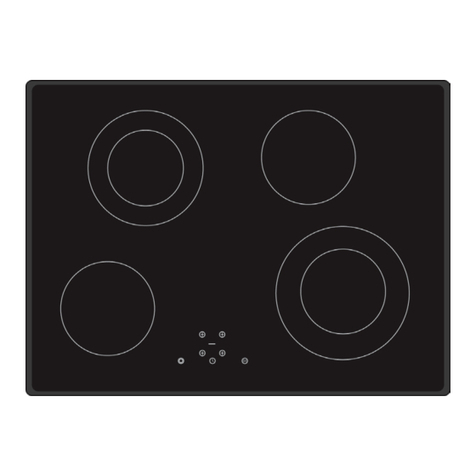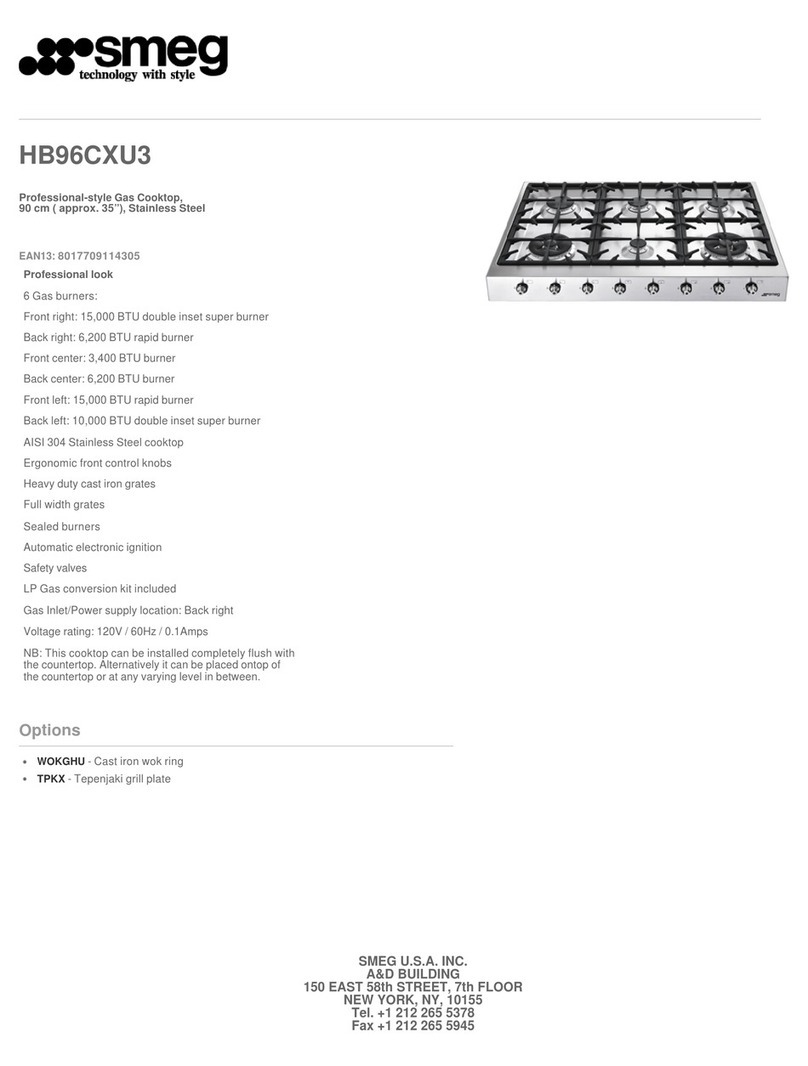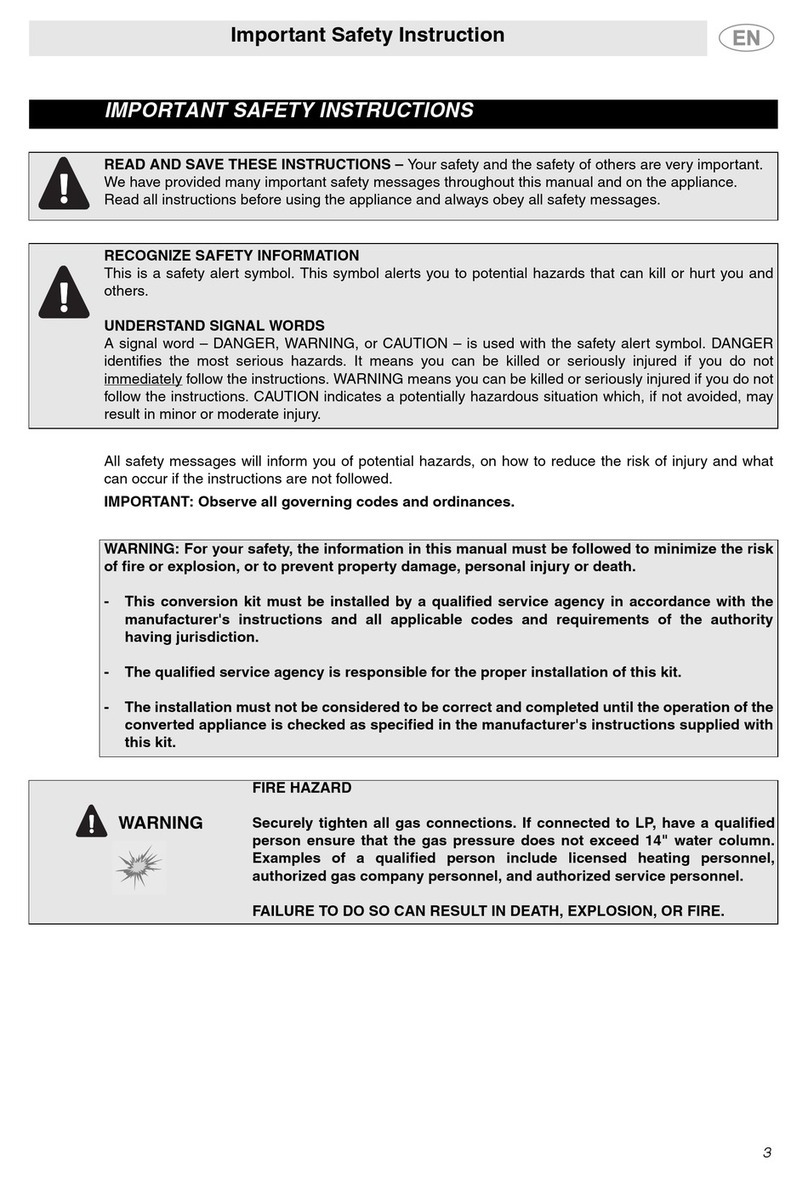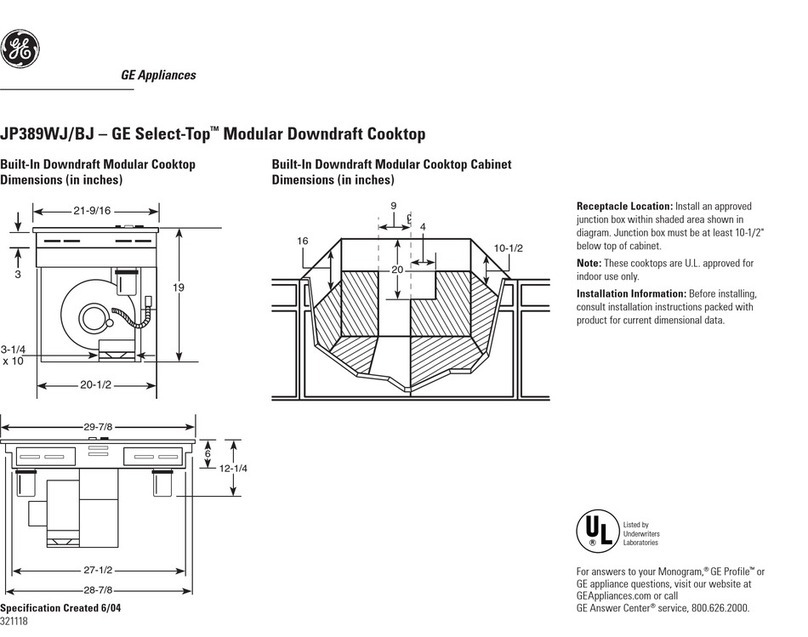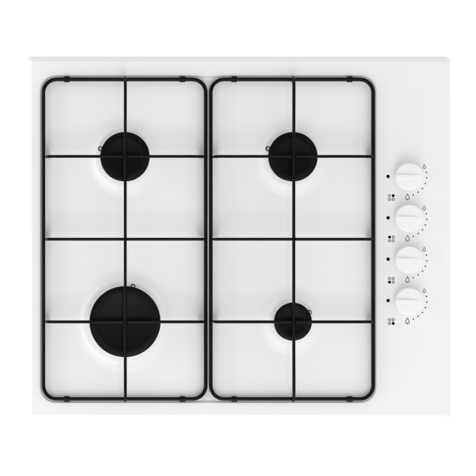
Instructions
4
1 Instructions
1.1 General safety instructions
Risk of personal injury
• Use outdoors only
• During use the appliance and its
accessible parts become very hot.
Keep young children away.
• Keep children under eight years
of age at a safe distance if they
are not constantly supervised.
• Never try to put out a fire or
flames with water: turn off the
appliance and smother the flames
with a fire blanket or other
appropriate cover.
• Have authorised persons carry
out installation and assistance
interventions according to the
standards in force.
• Even if apparently empty, gas
cylinders must always be handled
with care in accordance with the
safety regulations supplied with
the instructions.
• Never use any gas cylinder if
dented or rusty.
• Never store a spare gas cylinder
close to the appliance.
• Never disconnect the gas
cylinder from the appliance while
it is in operation and always
perform any procedure on the gas
cylinder well away from the
appliance.
• Only light the burners with the lid
raised.
• Do not try to repair the appliance
yourself or without the intervention
of authorised persons.
• Do not modify this appliance.
• If the appliance is to be out of use
for some time, close the gas
supply valve.
• In the event of a fault on the
appliance or a malfunction,
contact the aftersales service.
• If the knob becomes stiff to turn,
have the valves checked by an
authorised service centre.
• If the power supply cable is
damaged, contact technical
support immediately and they will
replace it.
• Always keep hold of the lid when
lowering it.
• Observe the thermometer
provided on the lid: when the
reading exceeds 300°c (red
zone) the lid must be raised to
prevent dangerous overheating.


